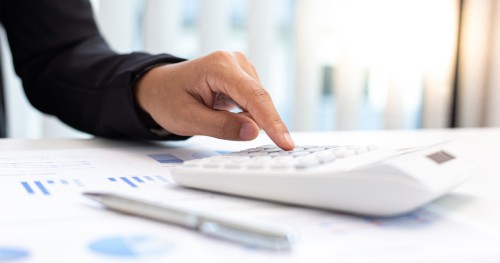Are limited company IT contractors eligible for the Marriage Allowance?

As it’s Valentine’s Day this Wednesday, it seems fitting to look at the Marriage Allowance, writes Matt Fryer, managing director of Brookson Group, a People 2.0 company.
In particular, let me answer what freelancers in an industry like technology might well ask at this time of year, ‘Are limited company IT contractors eligible for the Marriage Allowance?’
What is the Marriage Allowance?
Well, essentially, the Marriage Allowance allows you to transfer up to 10% of your personal allowance -- the money you earn before tax applies and is payable to HMRC -- to your spouse or civil partner, if they earn more than you.
For 2023/24 (ending on April 5th 2024), this amounts to £1,260, with a tax saving of £252.
When can I claim the Marriage Allowance?
Only people / couples with specific circumstances will be able to apply for the Marriage Allowance, namely:
You need to be married or in a civil partnership. Therefore you will be unable to apply if you are just living together.
One of you needs to be a non-taxpayer, meaning they will need to earn less than the £12,570 personal ‘tax-free’ allowance between April 6th 2023 and April 5th 2024.
The other partner needs to be a basic 20% rate taxpayer. This means you'd normally need to earn less than £50,270 a year, or if you live in Scotland, £43,662 a year.
You both must have been born on or after April 6th 1935.
How do tech contractors apply for the Marriage Allowance?
It is the non-taxpaying partner who needs to apply for the Marriage Allowance, and who elects to transfer 10% of each year’s personal allowance to the other partner.
You can do this online which will require both you and your partner’s National Insurance numbers, together with proof of identity, such as payroll (payslips/P60) and passport details.
The spouse receiving the benefit will have the extra allowance by virtue of an uplift to their tax code. You and your partner will then receive new tax codes that reflect the transferred allowance.
Your tax code will end with:
‘M’ if you are receiving the allowance.
‘N’ if you are transferring the allowance.
How much is the Marriage Allowance worth?
Your personal allowance will also be transferred if you complete a self -assessment tax return with HMRC. Alternatively, you can apply by post by completing the MATCF form.
The change is normally backdated to the start of the tax year. If you are eligible, you can backdate the claim for four years -- therefore you would benefit from a potential tax saving of £1,256. For example, in 2019-20, the allowance was worth £250. In the following three tax years, it was worth £250, £252, and £252 respectively.
So, assuming you’ve not made a previous claim to date, you could benefit from a retrospective claim of £250 + £250 + £252 + £252, which equals £1,004, then add your claim for 2023/24 (£252), giving rise to a total claim of £1,256.
The Marriage Allowance, from an IT contractor’s perspective…
As noted above, your eligibility depends entirely on how much you earn. Many contractors are higher rate taxpayers, and therefore won’t be eligible to make a claim.
The basic rate taxpayer will need to be earning less than £50,270 to qualify, therefore there are likely to be certain limitations for contractors in terms of eligibility.
Also, as a result of transferring a portion of your personal allowance to your spouse, from a technical perspective, this transfer doesn't increase the threshold at which they'd need to start paying higher rate tax, nor does it increase their own amount of personal allowance.
What if you’re a freelancer earning slightly over £50,270?
If you’re a freelancer or contractor currently earning slightly over £50,270, you cannot qualify for the Marriage Tax Allowance on the basis that a personal allowance transfer would bring you to within the band of basic rate tax.
This might not be the verdict on the Marriage Allowance which you were hoping for! Indeed, generally, for those contractors who have a spouse, who have not fully utilised their personal allowance, we’d advise that there are other potential tax planning opportunities to consider, which may offer greater tax savings.
If not the Marriage Allowance…
For example, if your spouse has no other income, you may also wish to consider paying her a basic salary in your company, thereby utilising their personal allowance. The company would also benefit from corporation tax relief on the same. In addition, you may wish to appoint your spouse as a shareholder, to benefit from dividend income paid, in proportion to their shareholdings.
However, these are not decisions which should be taken lightly! We would always advocate speaking to your accountancy adviser in respect of your company tax and personal tax planning, to consider all the options available to you, especially if your fling with the Marriage Allowance is now over before it ever really began!
Matt is a Chartered Tax Advisor with 18 years' experience of advising on tax planning and compliance. Matt has been with Brookson since 2009, having previously worked for Big 4 accountants, KPMG and PwC. Matt’s primary role is to ensure that the services provided by the Brookson Group comply with relevant legislation and regulatory requirements. Matt is also a Board member of the FCSA, the UK's leading membership body dedicated to promoting supply chain compliance for the temporary labour market.




Comment
Log in or create your account to react to the article.